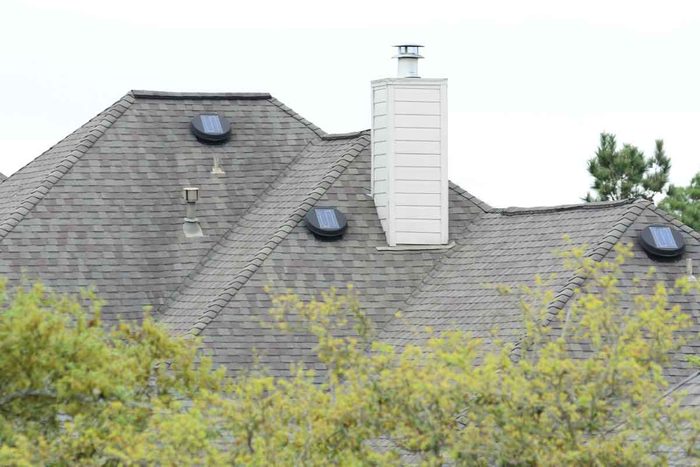Are Attic Fans Worth It? What to Know Before You Buy
Updated: Mar. 18, 2024

Attic ventilation comes in many forms. Here, we take a look at attic fans and why they’re useful.
Ventilation is important everywhere, even in the attic. Fans are one way to improve attic ventilation. They help homes stay cool in steamy summers, and even prevent ice dams in frigid winters. Here’s how to decide if an attic fan is right for your home.
On This Page
What Are Attic Fans?
Exactly what the name suggests. An attic fan pushes out stale indoor air and brings in fresh outside air. It might not sound like much, but the simple act of circulating attic air can greatly affect home temperature and energy consumption.
Attic fans can save you money on cooling costs. How? Because heat rises to the attic. Instead of letting that heat sit and re-enter your house, attic fans “move hot, humid air outside of your home and release it into the cooler overnight temperatures,” says Zac Houghton, CEO at Loftera. That translates to lower cooling costs.
An attic fan isn’t just for summer — you’ll use it year-round. A too-warm attic causes ice dams. As snow melts and refreezes, it can damage roofing, gutters, walls and more.
While other preventative measures exist, like roof deicing cables or roof rakes to remove snow, adequate ventilation can’t be overlooked. Keeping the attic cool in the winter will minimize the snow melt that can back up or leak into the house.
Be careful, though. If an attic isn’t properly insulated and vented, attic fans can remove conditioned air from your living space rather than the hot air from the attic, according to Energy Star. An attic fan won’t fix under-insulation, blocked vents and air leaks, either.
Types of Attic Fans
Like any home improvement, attic fans range in price depending on size, style and features.
“Attic fans cost between $150 and $475,” says Houghton. “The average fan costs between $200 and $300.” There are three main types of attic fans, differentiated by their power source: solar, electric and passive.
Solar-powered attic fans
Photovoltaic (PV) panels power these types of attic fans. “The solar-powered fan is generally mounted on the outside of the roof,” says Houghton. “It is used to circulate warm air from inside the home out through vents in the eaves or roof.” Some fans feature an optional solar-powered blower.
Electric attic fans
These draw power from your home’s electrical system. Houghton recommends them for “homes where there is no space underneath an eave or within a gable wall for mounting a solar powered fan.”
Some electric attic fans include thermostats. These can be connected to the home’s heating and cooling system to provide “better temperature control inside the house and more even ventilation,” says Houghton.
Passive attic fans
Passive attic fans rely on natural processes like wind or pressure to circulate air. Typically, they’re the least expensive type of attic fan.
Attic Fans vs. Whole House Fans
A whole house fan increases ventilation throughout the entire house, not just the attic. It pulls in fresh air from windows, venting that air through the attic, according to the U.S. Department of Energy. You’ll need extra attic ventilation to keep up with the amount of air exchanged.
Whole house fans keep the whole home cooler in the summer, but do have some drawbacks. They can be noisy. And if not installed and operated properly, they can create a backdraft.
How To Choose Between an Attic Fan and a Whole Home Fan
Whether an attic fan or whole home fan is best for you depends on your budget, location and goal.
If your house has problems with hot and cold spots, you might benefit from a whole home fan. “This large volume of moving air helps to equalize temperatures and prevent hot or cold spots throughout your home,” says Houghton. If you struggle with a hot upper level or ice dams, an attic fan might be better.
When in doubt, talk to a professional. A HVAC expert will look at your home’s specifications and help you decide on the best course of action.
Next: learn about bathroom exhaust fans for levelling up your bathroom ventilation game!